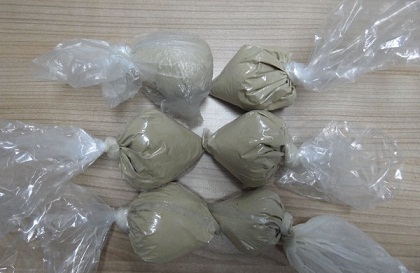
The Azerbaijani media has spread sensational information about the “Party Drug” crystal methamphetamine. According to the information obtained by Rashad Guliyev, the head of the Assembly of World Azerbaijanis, from sources in the German government, the Party Drug that has recently become a scourge in Azerbaijan is being made by Armenians in Khankendi. German intelligence has accurate information in this regard. The report says that the Armenians launched a plan of revenge by poisoning the youth after failing to digest the humiliating defeat in the Second Karabakh War. According to the source, the drug produced in Khankendi is transmitted to Azerbaijan via Iran. According to the report, the Party Drug was previously produced in Zangilan district. After the liberation of Zangilan, the Armenians continued this work in Khankendi. It is believed that the drug is often transported from abroad to Khankendi by cars with changed numbers.
The “Party Drug” crystal methamphetamine is an addictive psychostimulant and is therefore classified as a drug. Methamphetamine, first synthesized in Japan in the late 19th century, has been widely used in Europe and the US since the mid-20th century, mainly as a brain and physical stimulant. However, over time, the drug has been proven to have destructive effects on vital organs such as the brain, heart and liver. According to the United Nations Office on Drugs and Crime, amphetamine-type stimulants are the second most widely used drug in the world after marijuana. The use of this substance even exceeds the level of heroin and cocaine use. Methamphetamine causes sudden death due to pulmonary edema, cerebral hemorrhage, heart failure and heart attack. As a result of the initial use, sleep disorders, stomach pains, dry mouth, gnashing of teeth, tremors are observed. Also, the teeth of those who regularly use this substance begin to decay.
Although it is not yet possible to confirm this information on concrete facts, the allegations are not unfounded. That’s because this is not the first information about the preparation of drugs by Armenians in Karabakh.
Information on the cultivation and sale of drugs in the occupied territories of Azerbaijan is still reflected in the US State Department's 2000 report on the international drug control strategy. The US State Department report said that the occupied territories of Azerbaijan were used for mass transportation of drugs. Armenia is also considered a potential player in international drug trafficking due to its geographical location. The fact of growing hemp bushes in the occupied border areas of Azerbaijan was also mentioned in the report of the Parliamentary Assembly of the Council of Europe (PACE) on Nagorno-Karabakh.
The UN report found that drugs were transported on three routes. These are Afghanistan-Iran-Nagorno-Karabakh, Afghanistan-Pakistan-Iran-Nagorno-Karabakh, Afghanistan-Central Asia-Nagorno-Karabakh routes.
The statement issued by the Azerbaijani government in 2019 reads that the Armenians grow drugs mainly in the 132-kilometer uncontrolled part of the Iranian-Azerbaijani border, specifically in the Fuzuli, Jabrayil and Zangilan regions, and even laboratories were built for this purpose. The documents were submitted to the United Nations Office in Vienna, and a monitoring group was set up, but Armenia did not allow the group into the occupied territories.

The organization of cultivation and sale of drugs in the occupied territories of Azerbaijan was proved by the operations carried out by the Ministry of National Security in June 2013. During the operations, 12 people involved in smuggling drugs from Iran were exposed, and no less than 40.5 kg of drugs were seized from them.
As a result of the investigation, it became known that some of the drugs were grown in the occupied territories of Azerbaijan, from where they were first brought to Iran and then back to Azerbaijan. The members of the group said that Ersalam Halim, an Iranian who gave them the drug, said that customers preferred marijuana grown mainly in Karabakh. Babek Bagirov, a member of the group from Azerbaijan, even went to Iran to check the quality of the regular batch of marijuana ordered for the Armenian military. He was told that marijuana was grown in Karabakh by Armenian officers and soldiers and delivered to Iran on orders, from where it was sent to Azerbaijan and other countries.
The information about the cultivation of drugs by Armenians in Karabakh was confirmed during and after the Second Karabakh War.
For example, in October 2020, in the liberated areas of Fuzuli region, the area where the drug plants were grown and the laboratory, as well as a large amount of drugs were found.
Drug-growing areas were also found in Aghdam and Gubadli districts.
In Kalbajar, a drug field was discovered after the war. This is confirmed by a video spread on social networks.
The information, investigative materials and video facts contained in the reports show that Armenians, especially the Armenian military, were systematically engaged in the cultivation of drugs in the territory of Karabakh. According to a number of sources, Armenians earned $16-17 billion from drugs sold during the 28 years of occupation of Azerbaijani territories. All this gives grounds to say that Armenians are still engaged in drug growing in the territory of Karabakh, specifically in Khankendi.




















